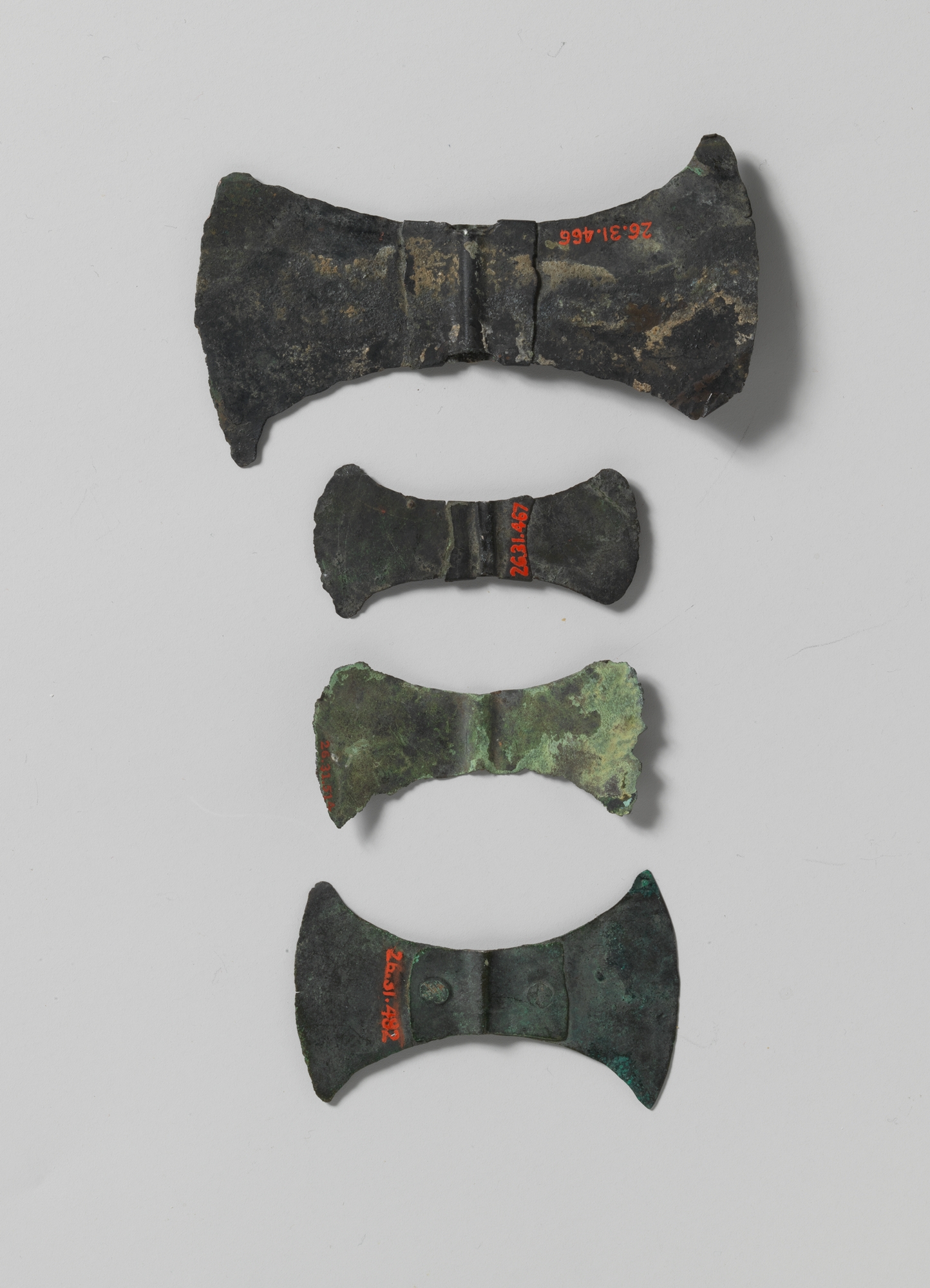Bronze double-ax head
The double axe played a central role in Minoan society and religion. Full-size versions were not only functional tools but also ceremonial objects that were displayed or dedicated in sanctuaries and graves. Miniature examples likewise served as votive offerings. Those with pierced handles could be worn as pendants or amulets. Although the religious function and meaning of the double axe is not clear, Minoan seals and frescoes often show it in scenes depicting rituals and in connection with a female deity. The design also appears as an individual sign on seals and pottery, as a mason’s mark on stone blocks, and in the Minoan scripts.
The size and insubstantial construction of this example makes it likely that it was a dedication.
Due to rights restrictions, this image cannot be enlarged, viewed at full screen, or downloaded.
This artwork is meant to be viewed from right to left. Scroll left to view more.



